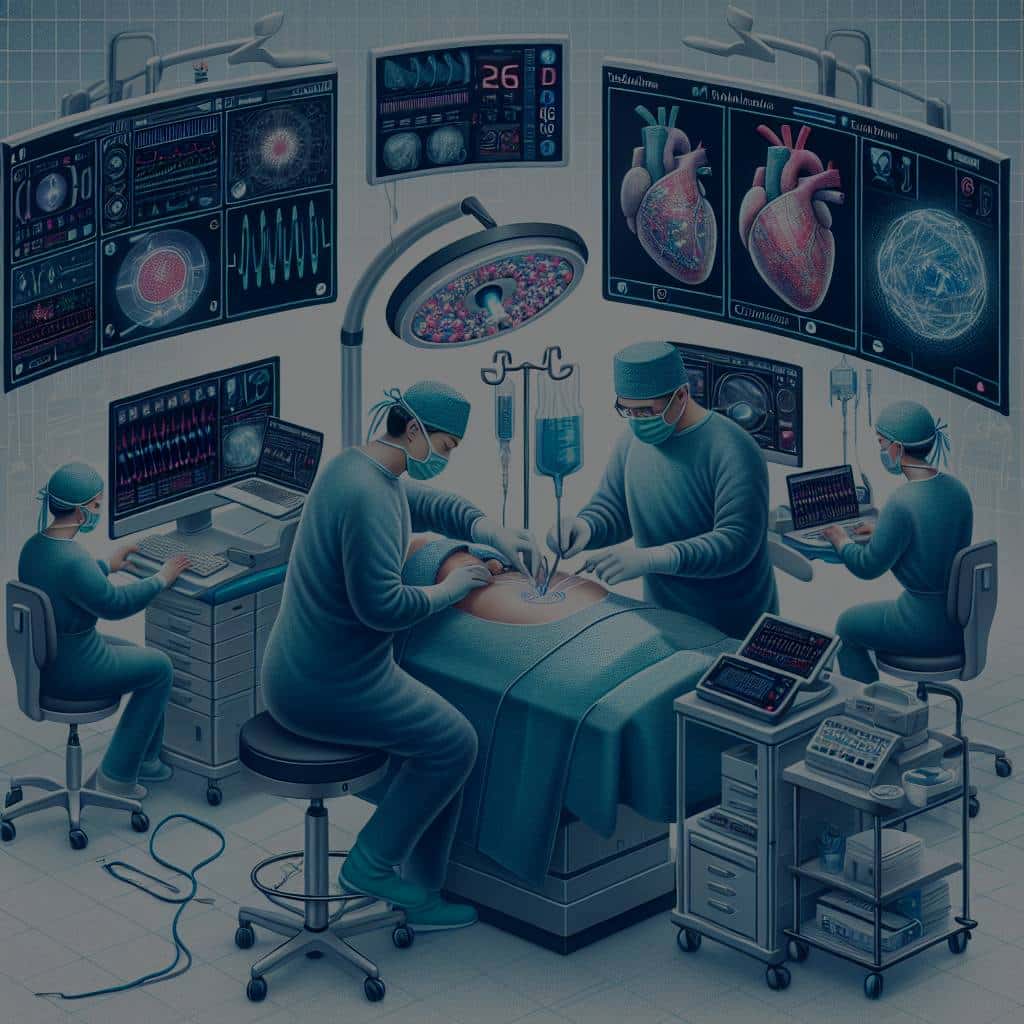In the dawn of robotic surgical procedures and the expansion of telemedicine, the healthcare industry is undergoing a significant transformation. Cutting-edge communication technology, such as the Tactile Internet, is playing a vital role in enabling these advancements. This article aims to explore how this data-driven technology is reshaping remote healthcare, specifically focusing on robotic surgery and telemedicine.
The Emergence of the Tactile Internet
The Tactile Internet is a novel concept, an advanced form of the internet that aims to revolutionize the way we perceive and interact with the world around us. This technology is designed to provide real-time, high-quality tactile and haptic feedback, allowing for physical experiences to be transmitted and replicated over the network. But how does this come into play in healthcare?
In parallel : How Is Blockchain Being Applied to Improve Traceability in the Pharmaceutical Supply Chain?
In the healthcare context, the Tactile Internet can enable remote interaction with patients, which is especially useful in surgical procedures and telemedicine consultations. This technology has the potential to improve healthcare services significantly, particularly for people living in remote areas who lack easy access to medical facilities.
Tactile Internet in Remote Surgery
In the realm of remote surgery, or tele-surgery, the Tactile Internet can be an absolute game-changer. This technology can allow a surgeon to perform operations on a patient from a distance, using a robotic system that they control. The Tactile Internet can provide the necessary real-time feedback that makes these procedures more accurate and safer.
Also to read : Can chatbots be used in the construction industry?
You could imagine a scenario where a world-class surgeon in New York is guiding a robotic arm in a rural hospital in Africa, performing a complex surgical procedure, all in real-time. This concept is not science fiction; it is the reality that the Tactile Internet is helping to manifest.
Searches on Google Scholar reveal numerous studies demonstrating the effectiveness of Tactile Internet in remote surgery. For instance, it provides the surgeon with haptic feedback, giving them a sense of touch as if they were physically present at the site of surgery. This feedback is crucial for the surgeon to control the force they apply during the operation, thereby reducing the risk of complications.
Tactile Internet in Telemedicine
Telemedicine, the practice of caring for patients remotely when the provider and patient are not physically present with each other, is another area where the Tactile Internet can have a significant impact. Real-time communication is crucial in telemedicine, especially when it comes to patient examination and diagnosis.
The Tactile Internet can enable healthcare professionals to perform remote physical examinations, and feel the same sensations that they would if they were in the same room as the patient. This technology can help diagnose conditions based on tactile feedback, such as detecting lumps in a patient’s body or checking the firmness of a swollen area.
Earlier, telemedicine was limited to communication through audio and video channels only. However, with the advent of Tactile Internet, healthcare providers can now add the sense of touch to their telemedicine toolkit, making remote healthcare more comprehensive and effective.
Challenges and Future Directions
While the Tactile Internet has enormous potential to revolutionize remote healthcare, it’s not without its challenges. The technology requires a high-speed, reliable network to operate effectively, which may not be readily available in many parts of the world. Additionally, ensuring the technology’s security and privacy is paramount, considering the sensitive nature of healthcare data.
Despite these hurdles, the advancements in the Tactile Internet hold promise for a future where access to quality healthcare is not restricted by geographical boundaries. Researchers are continually working to improve the technology and overcome the challenges, enabling its widespread application in remote surgery and telemedicine.
As we move towards a more interconnected world, the Tactile Internet stands as a testament to how technology can bridge gaps and bring about meaningful change. It’s an exciting time to witness these changes, and we look forward to seeing how this technology continues to evolve and reshape healthcare as we know it.
The Enabling Role of Artificial Intelligence and Virtual Reality
As we delve deeper into the potentialities of the Tactile Internet, we cannot overlook the roles of Artificial Intelligence (AI) and Virtual Reality (VR) in enhancing its functionalities. AI and VR are not just stand-alone technologies but are increasingly being integrated with the Tactile Internet to augment remote surgery and telemedicine experiences.
AI can be a powerful tool in the management and analysis of the colossal amount of data generated during remote surgical procedures and telemedicine consultations. Its application in remote healthcare through the Tactile Internet can optimize various stages of treatment, from diagnosis to post-operative care, thereby improving the overall efficiency and effectiveness of medical services.
On the other hand, VR can create immersive, realistic environments that can aid in the training of medical practitioners for remote surgeries. With VR, surgeons can practice complex procedures countless times in a simulated environment before performing them on actual patients. This not just cuts down the learning curve but also significantly reduces the risk of complications during the actual procedure.
A Google Scholar search reveals numerous free articles and PMC free research papers discussing the integration of AI and VR with the Tactile Internet. Studies suggest that these technologies combined can provide a more holistic and enhanced healthcare experience, especially for remote surgical procedures and telemedicine applications.
Conclusion: Embracing the Future of Remote Healthcare
The advent of the Tactile Internet is a testament to the rapid advancements in communication technologies. Its role in facilitating real-time, low latency interactions has given a new dimension to remote healthcare services. Robotic surgery and telemedicine, once considered the future of healthcare, are now within our reach, thanks to the Tactile Internet.
However, the journey is far from over. The Tactile Internet is still a growing technology, and there are many challenges to overcome, from ensuring high-speed network availability to securing sensitive healthcare data. But as technological advancements continue to push the boundaries of what’s possible, one can expect these hurdles to be surmountable.
Undeniably, the Tactile Internet has opened new doors to remote healthcare applications. With its ability to provide haptic feedback, it closes the loop between the surgeon and the patient, making remote surgeries more accurate and safer.
The integration of AI and VR with the Tactile Internet promises an even more exciting future. Whether it is robot-assisted surgeries or virtual patient consultations, the applications seem endless. As we stand on the cusp of this technological revolution, it’s fascinating to envision a future where access to quality healthcare is not bound by geographical limitations.
In conclusion, the Tactile Internet, along with AI and VR, is poised to redefine the landscapes of remote surgery and telemedicine. As we continue to explore and harness the power of these technologies, we are not just looking at a future of advanced healthcare but also paving the way for equal access to quality healthcare services for everyone, regardless of their location. The future of healthcare is not just about advanced technologies, but also about empathy, inclusivity, and accessibility. And that is the future we should strive for.






